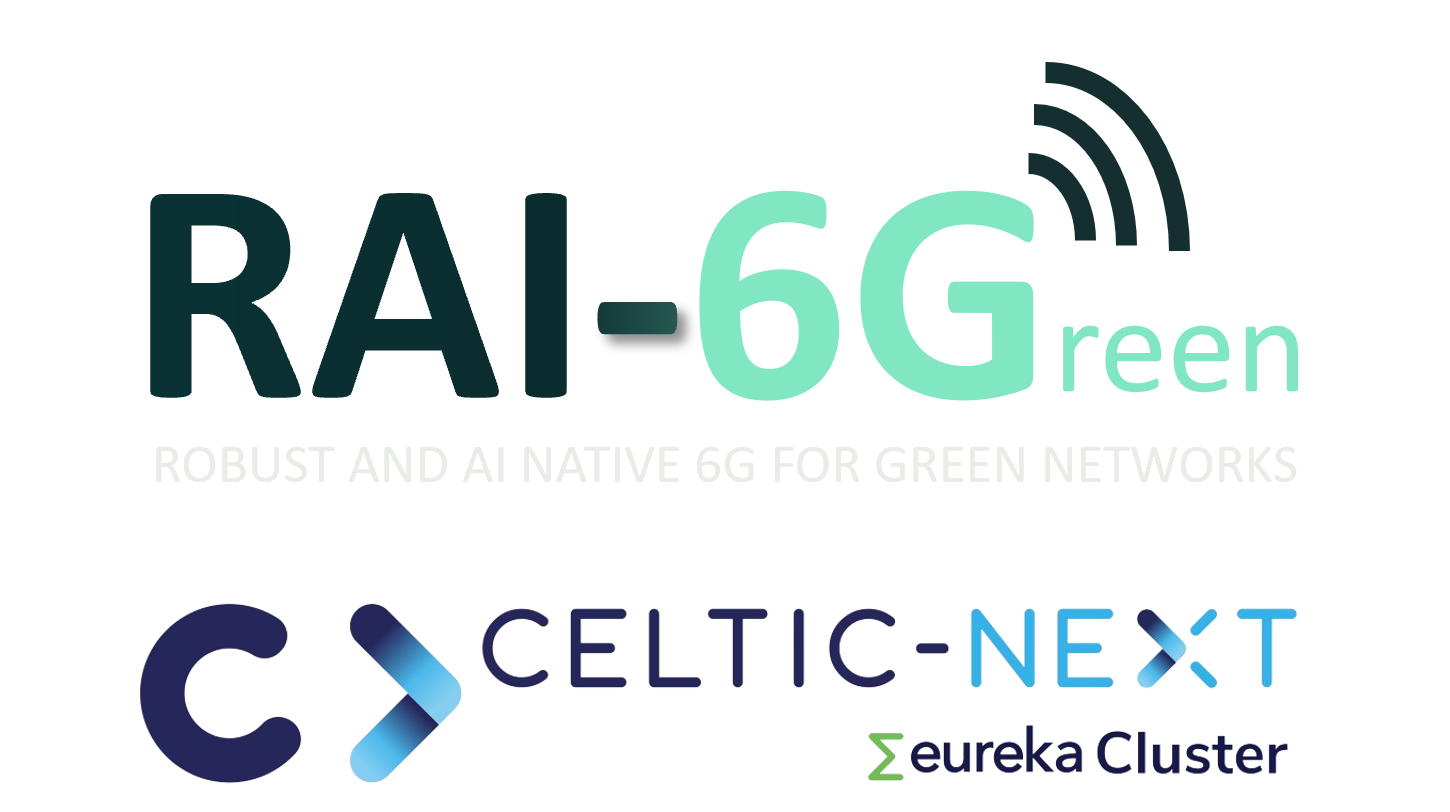RAI-6GREEN
Robust and AI Native 6G for Green Networks


The global 5G rollout is accelerating, offering more energy-efficient data transfer than older networks. However, increased data volumes lead to higher energy consumption. The growing use of industrial and sensitive applications on 5G networks simultaneously raises resilience requirements, creating a trade-off with energy efficiency. The legacy cellular network architecture limits elasticity based on fixed coverage and deployment. Additionally, the current cloud-centric data processing and storage structure hinders both resilience and energy efficiency, as sending data from devices to distant data centers introduces vulnerability to intermediate link failures and incurs high energy costs along the entire path.
Recent advancements in virtualization, software-defined networks, and cloud-based resources enable the creation of cloud-based cell-less networks. These networks can dynamically reconfigure processing and network resources based on changing traffic conditions. Achieving both resilience and energy efficiency is possible with an adaptive, fully elastic, cloud-native, and AI-driven network architecture controlling advanced technologies at the physical layer.
The main goal of the RAI-6Green project is to achieve an improvement of about 30-40% of the end-to-end energy efficiency compared to current mobile networks, while guaranteeing the reliability and resilience needed by that mission. This target is very challenging but possible considering results obtained by IT industries for operating data centers and access networks. These network segments are the most energy consuming parts of the IT infrastructure.
Proposal of AI-based Network Energy Efficiency and Spectral Efficiency assessment and optimization including the access, the point-of-presence and the core networks.
Explore solutions for accelerating computation facilities that empower AI in a distributed or centralized architecture. This item is closely related to green computing facilities.
Solutions for control procedures that optimize networks sites power consumption and power usage (including local solar energy) depending on a variety of parameters that could be non-correlated.
Proposal of risk-sensitive (delay, robustness, energy consumption, quality of service…) optimization for performance management that takes into account the end-to-end path.
Proposal of smart, autonomous and parameter-free BSs that learn from the environment and activate the relevant energy saving features when needed with the optimized parameter settings.
Definition of AI-based Network multi-objective optimization using data (traffic prediction, resource preallocation, self-healing).
Definition of KPIs for robustness and energy efficiency of network slices and adequate measurement and reporting methods (for energy efficiency standards evolutions).
Interconnection of 6G networks, their edge data centers and the smart grid for an opportunistic exploitation of the surplus of energy production within the edge data centers, for AI as a Service data processing.
Technical-economic study for AI-based, green deployment of Edge computing, and proposal for coinvestment plan involving stakeholders, such as network operator and service providers.